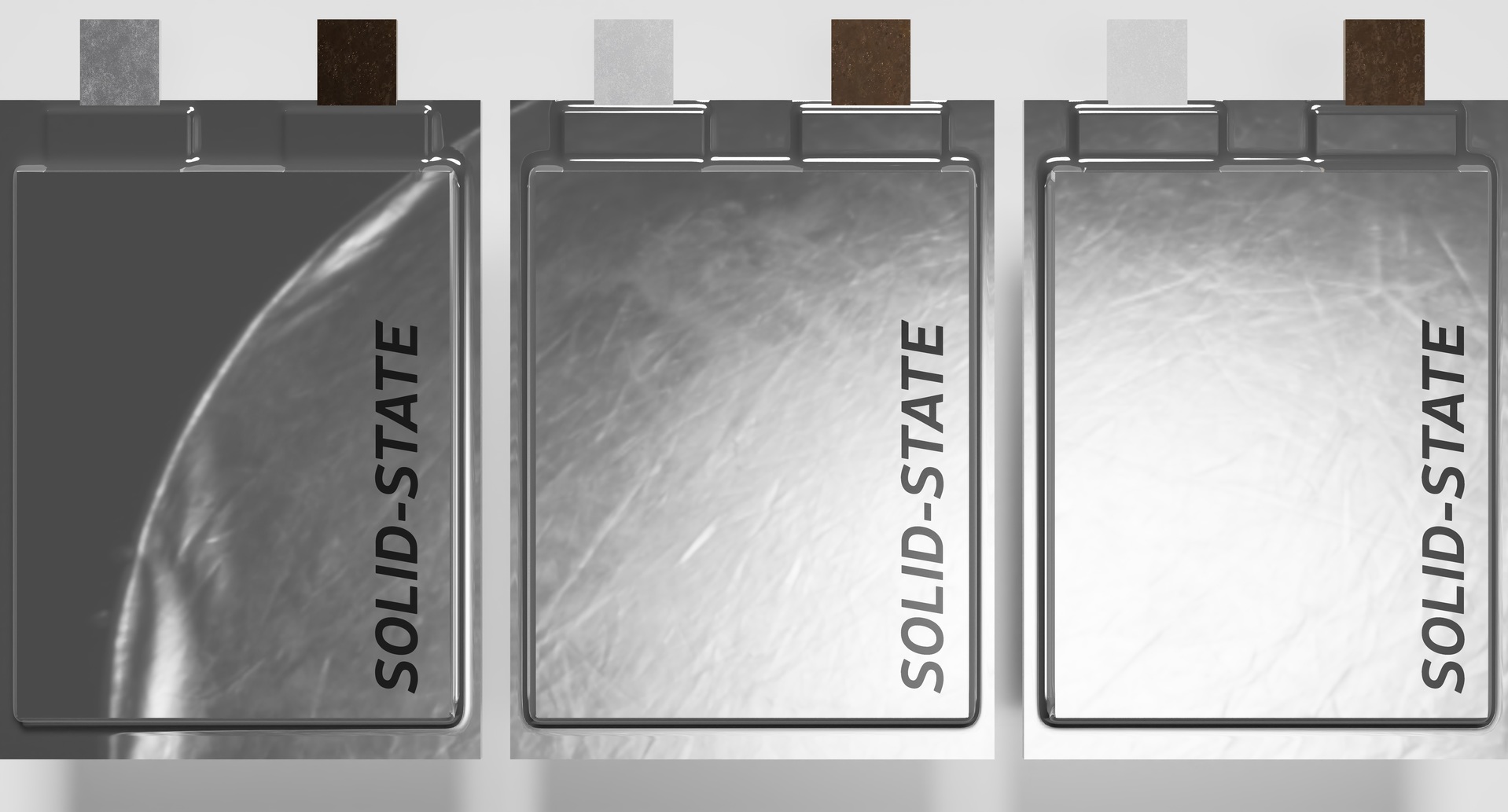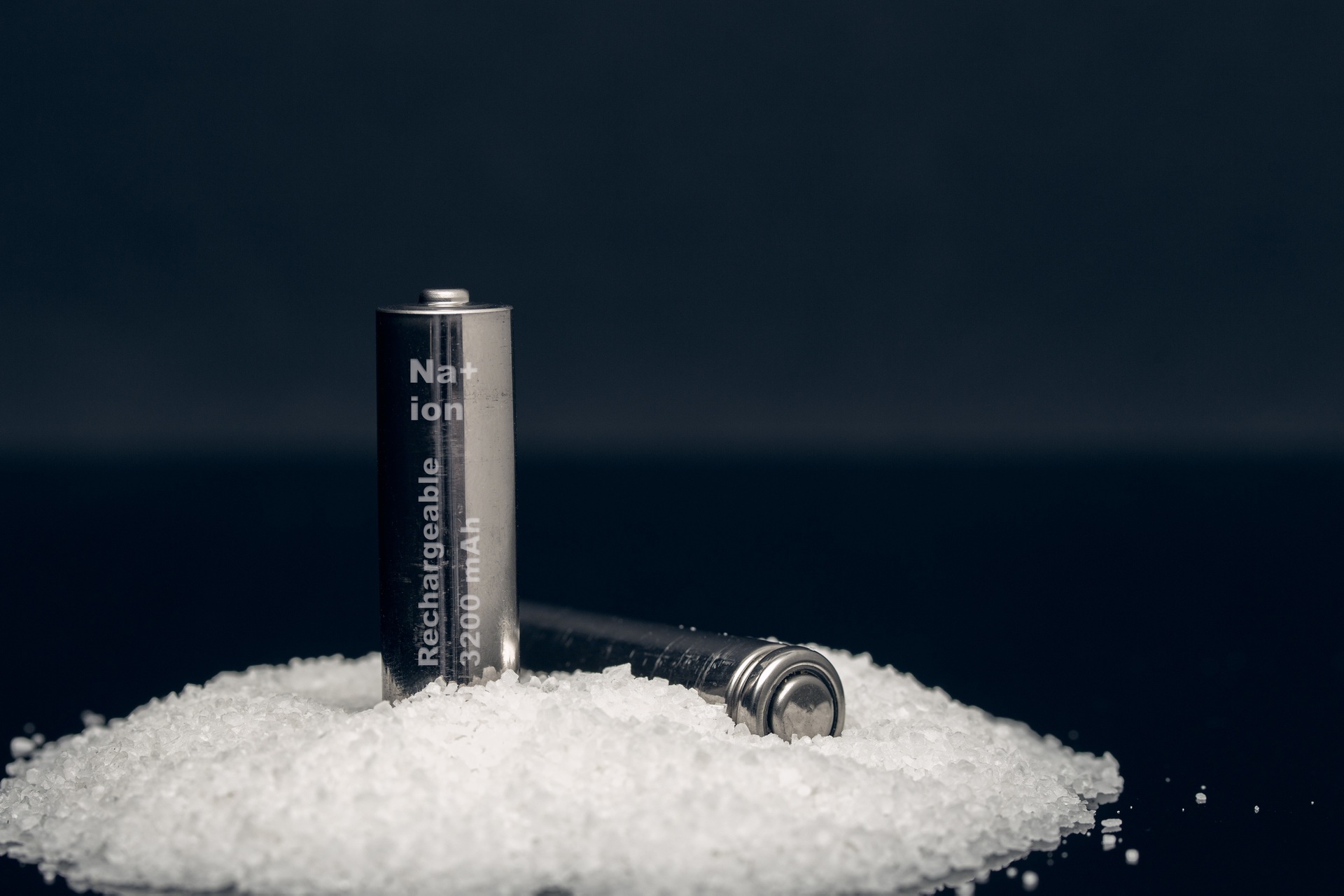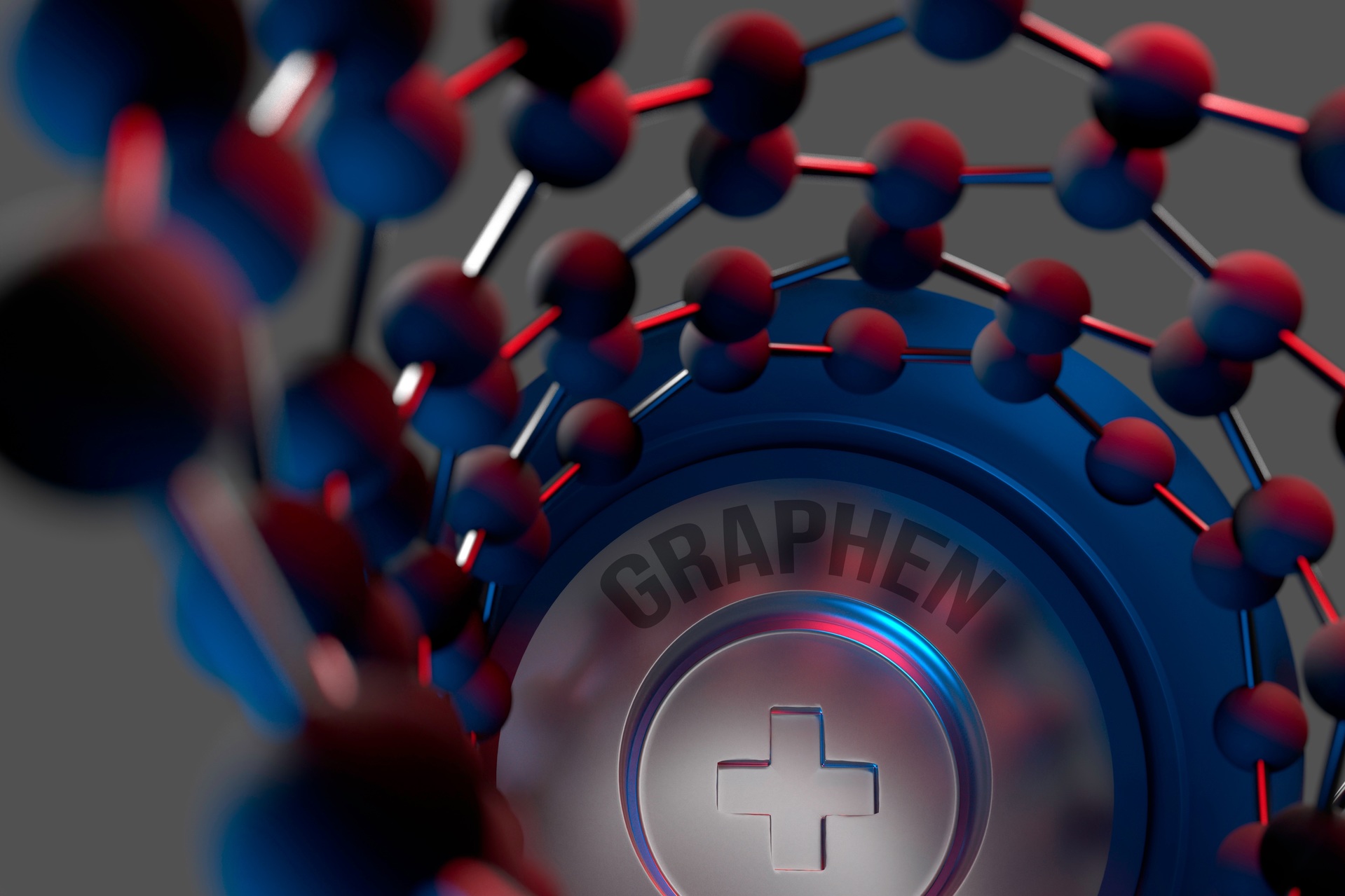7 Lithium Battery Alternatives
Share:
Welcome to Thomas Insights — every day, we publish the latest news and analysis to keep our readers up to date on what’s happening in industry. Sign up here to get the day’s top stories delivered straight to your inbox.

Lithium-ion batteries currently dominate energy storage technology 一 and for good reason. Their capacity, rechargeability, and price make them ideal for both consumer and industrial applications.
However, the advent of renewable energy equipment, electric vehicles, and the issues surrounding lithium extraction and safety are forcing markets to find batteries independent of the alkali metal. As a result of this demand, numerous lithium battery alternatives are in development that could shift the power balance for energy storage 一 given they are feasible, and more importantly, scalable.
Ranging from seawater batteries to those made from a nanomaterial that’s 100 times stronger than steel, here are seven exciting innovations in battery technology. Find out how these new technologies aim at upending the $46.4 billion global lithium-ion battery market with cheaper, more effective, and less environmentally harmful alternatives.
1. Aqueous Magnesium Batteries

If it were not for a few key issues, magnesium metal would be an ideal candidate to replace lithium 一 it is the eighth most common element, non-toxic, has a negative electrochemical potential, and has a high capacity thanks to its additional valence electron. The main issue with this metal is its affinity for moisture and passivation when in aqueous settings. In simpler terms, magnesium forms a protective inert oxide layer on its surface whenever it gets the chance, making its use as a reactive battery anode nearly impossible.
That is until researchers under Professor Dennis Leung from the Department of Mechanical Engineering at the University of Hong Kong (HKU) created a novel “water-in-salt” aqueous electrolyte battery that regulates this passivation layer when using a magnesium anode.
In their research, Professor Leung’s team created a chloride-based supersaturated electrolyte where the salt (solute) outweighs the solvent (water) which restricts the availability of free water from passivating the magnesium anode. Furthermore, the adsorption of chloride ions on the anode’s surface reacts with any oxidized magnesium, re-exposing the bare metal so the redox reaction can continue.
Professor Leung’s team successfully proved the functionality of this aqueous magnesium battery, opening up new avenues for its commercialization. Their proof-of-concept is rechargeable for hundreds of cycles and has a high discharge capacity when compared to other multivalent battery technologies like zinc and aluminum-based batteries of the same nature. If scaled, these batteries would eliminate the need for lithium, increase safety, and reduce the cost of battery technology by a significant margin.
2. Solid State Batteries

Researchers in NASA’s Solid-state Architecture Batteries for Enhanced Rechargeability and Safety, or SABERS program, have made significant progress on solid-state batteries since the program’s inception in 2019. Focusing on innovative battery technologies for aircraft, researchers at NASA’s Glenn Research Center have increased their prototype battery’s discharge rate by over 10 times, reduced weight by 30-40%, doubled-to-tripled its energy density when compared to conventional lithium technology, and significantly improved their safety in harsh conditions.
The SABER program is now collaborating with institutions like Georgia Tech, Argonne National Laboratory, and Pacific Northwest National Laboratory to capitalize on their initial successes and drive research toward practical, manufacturing-based designs.
In an entirely different sector, Toyota Motor Corp. currently owns more than 1,000 patents on solid-state technology and is on track to roll out solid-state EVs by 2025. The company reports that its technology can achieve full-charge distances of up to 700 km and a full charge in less than 20 minutes, all with an increased safety profile. EVs with solid-state batteries would, in theory, give drivers even more reasons to make the switch from traditional fossil-fuel engine technology and propel the industry beyond its lithium-based constraints that are currently causing low EV adoption rates.
Sodium-based Batteries

Sodium is a group 1 alkali metal that has many of the same properties as lithium but is found nearly everywhere on Earth due to its abundance in seawater. Sodium-based batteries would drastically reduce the cost of battery technology and remove the need for costly and environmentally harmful lithium mining operations as well as other bottleneck metals like cobalt, nickel, and manganese.
Engineers have been attempting sodium-based battery technologies with little success until recently: now, several ventures are threatening to kick lithium out of the battery equation entirely.
3. Sodium Antimony Telluride Intermetallic Anodes
The University of Texas at Austin has spearheaded sodium-based battery technology with two approaches: The first involves creating a better anode.
One of the chief issues with using sodium metal as an anode is the formation of unstable surface corrosion and sodium dendrites that can short batteries, leading to ignition risks. What’s worse is that the faster the battery is charged and discharged, the faster and larger these dendrites grow, meaning current sodium technology is handicapped when in comparison to lithium batteries that can better mitigate this issue.
To combat this effect, UT Austin researchers have designed a composite material made from rolling thin sodium sheets on antimony-telluride powder and layering these sheets so that the sodium is uniformly distributed through the composite. This sodium antimony telluride (NST-Na) intermetallic composite both solves the dendritic issue and recharges as fast as its lithium counterparts.
The NST-Na composite binds better to sodium than sodium binds to itself, meaning that in use the element will prefer binding to the anode in a uniform layer and will not bind to itself nor form unstable dendrites. Researchers have already applied to patent the material and are conducting further research to investigate its feasibility in commercial applications.
4. Sodium-Sulfur Batteries
UT Austin’s second approach involves creating a better electrolyte out of a concentrated salt-sulfur solution within a motionless, nonparticipating solvent to prevent sulfur dissolution. In current attempts at sodium-sulfur batteries, sulfur dissolves into solution during discharge and moves between electrodes in a so-called “shuttling'' dynamic that results in damaged components, loss of charge over time, and dendritic formation. Due to this effect, current sodium-sulfur batteries have low cycle life and safety issues.
Sodium-sulfur batteries are not advantageous enough to unseat lithium-ion technology in their current form. They are reserved for large battery systems where sodium and sulfur must run at high temperatures of above 300 °C and where these temperatures require better cooling systems and containment protocol or the battery poses ignition risks.
UT Austin’s novel electrolyte prevents sulfur from dissolving by diluting the concentrated salt solution with an inert solvent that keeps sulfur in a half-dissolved state, much like when you put too much cornstarch in water and it becomes a thick slurry. They showed that at ambient temperatures this new electrolyte prevented unwanted sulfur reactions, expanded battery life, and most importantly did not use lithium or other rare earth metals.
UT Austin is now scaling this electrolyte to larger batteries to see if it can work in commercial settings like EV batteries and battery packs for energy storage. An ambient temperature sodium-sulfur battery, even if less energy dense, would drastically reduce the price and replace lithium-ion technology in cost-efficient applications as it would be more recyclable and less toxic.
In a more recent development, Dr. Shenlong Zhao at the University of Sydney has discovered a room-temperature sodium-sulfur battery that significantly improves the energy density and battery life of the technology. The coin cells developed at the university’s School of Chemical and Biomolecular Engineering implement dual-active-site cathodes with graphene frameworks dispersed with a molybdenum-disulfide semiconductor material. In simpler terms, these atomically-dispersed cathodes increase cyclic stability, capacity, and the reactivity of sulfur in the system, alleviating the shuttling issues and allowing the battery to run at room temperature. Another benefit of this discovery is that it makes these batteries less expensive to produce, less toxic, and more recyclable without sacrificing performance.
5. Seawater Batteries
Yes, new batteries may in fact come from the ocean, and not from deep underground. IBM Research’s 2019 report unveiled a secret material science endeavor from the computing giant to source three proprietary materials derived from seawater that can be used to create batteries on par 一 or better 一 than current lithium technology.
IBM has not released any information about what these materials are or how they are designed to achieve a successful battery, but it is most likely safe to assume that one of these materials is sodium-based as it is the most common metal in seawater. IBM indicates that its new technology can reach 0-80% charge in less than five minutes, has a huge power density of 10,000+ W/L, increases safety, significantly decreases costs, and most importantly eliminates the need for cobalt, nickel, and heavy metal mining entirely.
Little can be said about the feasibility, scalability, or even truth of IBM’s claim; however, what is true is that the company has partnered with Mercedes-Benz Research and Development North America, Central Glass, and Sidus to build a next-generation battery development ecosystem that will facilitate the development of such batteries. They have not released any further information on the project since the press release in 2019, and so many eagerly await the results of their partnership with these manufacturers to see what a commercially viable seawater battery looks like.
6. Graphene Batteries

Not only is graphene 100 times stronger than steel, but it also has a high charging capability and is highly conductive. Graphene battery technology has proven to be possible, but it is only now that practical competitors to lithium technology are coming to fruition.
Graphene Manufacturing Group (GMG), a clean technology company focused on graphene-based solutions, paired up with The University of Queensland Australia and Uniquest to develop a graphene aluminum-ion battery. Using their proprietary graphene manufacturing process where natural gas is converted into the nanomaterial, GMG and collaborators showed that their graphene aluminum batteries are interchangeable with lithium batteries, have higher energy and power densities, are stable at high temperatures, are up to 70 times faster charging and up to 3 times longer lasting, and most importantly requires no rare earth metals.
GMG is currently scaling up its designs for commercial applications by further testing prototypes while adding manufacturing capabilities to its business so that, when a commercially viable graphene battery is finalized, GMG can hit the ground running. If successful, GMG is poised to disrupt the lithium battery market with a 90% recyclable, less expensive, and more effective battery technology that may spell the end of lithium batteries.
7. Manganese Hydrogen Batteries

The transition metal manganese is the 12th most abundant element on Earth and the sixth most abundant metal 一 it is much more common than lithium but retains many advantageous chemical and electrical properties useful in battery applications.
The only major issue with manganese is its instability, which changes the performance of the battery over time. Designing around this issue has largely prevented manganese battery technology from progressing, however current advancements are changing this fact.
Researchers at Stanford University created a novel rechargeable water-based battery where they showed a reversible electron-exchange between water and a manganese salt. In their prototype, a power source fed electrons into the battery where they reacted with aqueous manganese sulfate, leaving manganese dioxide on the electrodes and releasing excess electrons as hydrogen gas.
The polarity was then reversed, causing the manganese dioxide to dissolve back into water and replenish the manganese sulfate salt, thus recharging the battery and releasing more excess electrons as hydrogen gas. The hydrogen can be made back into electricity via well-known processes, meaning that this battery, while not high capacity, is ideal for utility-grid applications where longevity, price, and simplicity are paramount.
Researchers are currently investigating the scalability of this manganese-hydrogen battery, and are confident that larger versions can meet the Department of Energy’s goals for utility grid energy storage better than lithium battery counterparts.
Charging Ahead
Although many of these technologies are still in development and are not commercially available yet, they indicate that modern industry is accelerating to end its affair with lithium-ion batteries. For further advancements to be made, designers must show that their proof-of-concepts are not only better than lithium-ion technology, but also scalable to commercial applications like EV batteries, home power storage systems, consumer electronics, utility grids, and more.
Suppliers with access to modern materials like graphene, composites, and the technology to produce them are best-positioned for this change. Any company looking to prepare for the changeover to newer, safer battery technology should perceive lithium as a stepping stone, not a staple metal.
Image Credit: Fishman64 / Shutterstock.com


